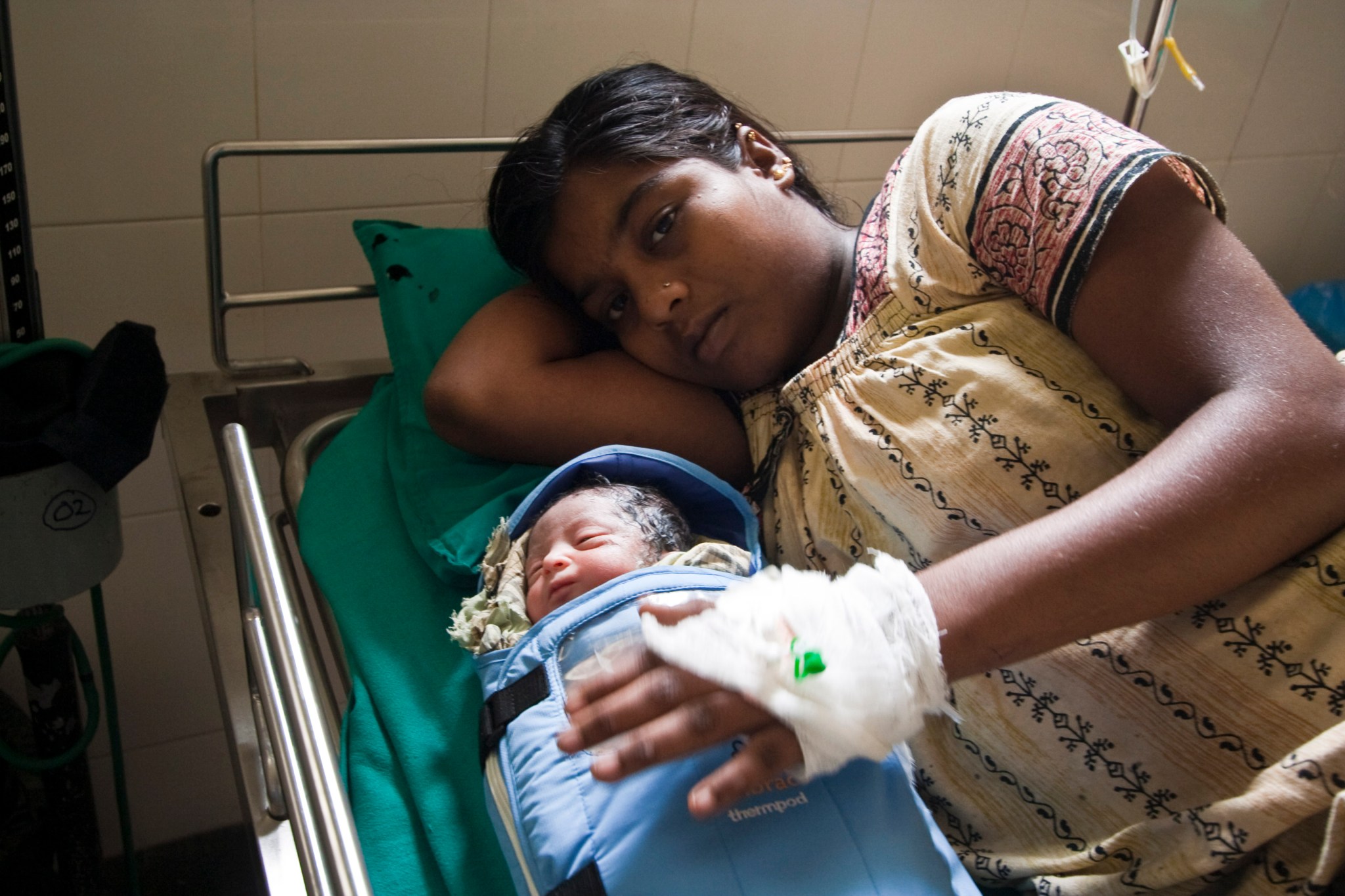
NASA’s astronauts benefit from some of the most advanced, intricately engineered technology in the world — and now, so can babies.
A spacesuit is, by necessity, almost impermeable to temperature. While its many layers of insulation protect the wearer from the extreme temperatures on its outside surfaces in space, they also work the other way, holding in body heat that, if not regulated, would quickly become uncomfortable.
One method NASA investigated in the 1980s for managing heat inside a spacesuit was phase change materials.
Like ice cubes in a drink, these materials steadily absorb heat as they change phase from solid to liquid, and, if exposed to colder temperatures, they release that heat as they refreeze. The trick was finding a material that changes phase at temperatures comfortable to humans and which could hold more heat and transfer it more quickly than water. For safety, it also needed to be nontoxic and nonflammable.
In the 1980s, Johnson Space Center funded successful efforts to incorporate such phase change materials into fibers and fabrics for use in space suits.
Although the resulting phase change fabrics never caught on for use in space, one company, Gateway Technologies, saw potential for commercial applications. Now called Outlast, the company licensed exclusive rights for incorporating the material into fabrics and fibers.
Outlast supplies fabrics infused with microencapsulated phase change materials to hundreds of companies, making it one of the most successful NASA spinoffs. Companies use the materials in everything from bedding to athletic clothes, dress wear, underwear, pajamas, sleeping bags and more — and now they are finding a use in products designed for babies.
Saving Preemies
While Outlast was building its robust customer base, Stanford University MBA student Jane Chen and a small team of classmates were assigned in 2007 to try to come up with an infant incubator to help care for babies after birth. The catch: it had to be manufactured for just $200, or 1 percent of the price of traditional incubators.
They hit on phase change materials, came up with a prototype using Outlast fabrics, and started a nonprofit called Embrace, which they based in Bangalore, because India has the highest number of premature births per year.
Since their final product was developed, the Embrace infant warmer has been used to treat hundreds of thousands of premature and otherwise low-birth-weight infants in populations lacking access to modern medical care throughout 14 developing countries.
In 2012, encouraged by Chen’s American friends having babies, the company spun off a for-profit company, Embrace Innovations, to sell products with phase change materials to parents.
Through a Kickstarter campaign in spring of 2015, Embrace Innovations raised $130,000 and started taking preorders for a line of infant swaddles, sleeping bags and blankets, marketed as the Little Lotus product line, all made with Outlast linings shot through with microencapsulated phase change materials.
Better Sleep, Plus a Donation
“Our products absorb or release heat to keep babies at a comfortable skin temperature,” explains Kai Chan, vice president of operations at Embrace Innovations. Fewer temperature fluctuations mean a baby rests more easily, which means the parents also rest easier, she notes.
She cites an informal study showing that 8 out of 11 babies slept on average four hours longer over a five-day period with Little Lotus products, compared to other comparable products on the market.
Buying Little Lotus products also offers another benefit: “With every product purchased, a baby in a developing country will be helped with an infant warmer,” Chan says. To donate the warmers, the company is partnering with other nonprofits.
“We’re using this NASA technology not just to keep babies comfortable but also to support our efforts to save premature babies around the world,” Chan says, noting that the company has set a goal of helping 1 million infants.
NASA has a long history of transferring technology to the private sector. Each year, the agency’s Spinoff publication profiles about 50 NASA technologies that have transformed into commercial products and services, demonstrating the wider benefits of America’s investment in its space program. Spinoff is a publication of the Technology Transfer Program in NASA’s Space Technology Mission Directorate.
To learn more about this NASA spinoff, read the original article from Spinoff 2017.
For more information on how NASA is bringing its technology down to Earth, visit http://technology.nasa.gov.
Mike DiCicco
Goddard Space Flight Center




























